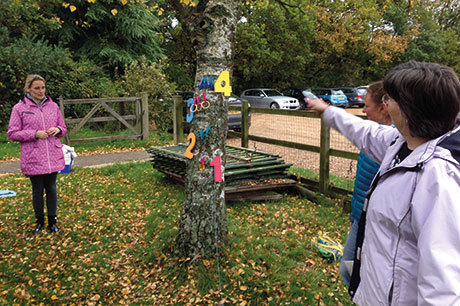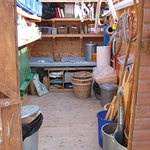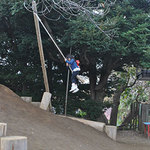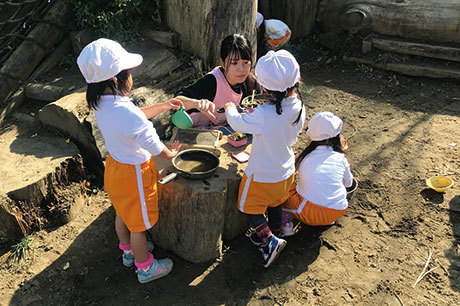
Download the PDF of this article
Transforming outdoor play isn’t about expensive new fixed equipment or replicating indoor activities outdoors – it’s about knowing what you have, what children need and what you can do about it.
1 AUDIT RESOURCES

Begin the year with a burst of energy – empty out all your sheds, search behind bushes, dig through the sandpit and discover exactly what you have in the way of fixed and portable (or loose) resources. Cast a critical eye over everything, and make a record about each resource:
- What condition is it in? Does it need repairing or replacing?
- When did you last use this? Why? It is broken, forgotten about or the wrong size?
- Do you need more of these, or bigger or smaller versions?
- Could you make this resource more accessible for daily use?
- Should, could, you use it in new and better ways?
- Could children self-select it?
- Could this be stored outdoors or hung on a wall or from a beam to free up shed space?
- Do you need to reorganise the shed? And add more hooks?
 Next, think about gaps in resourcing. Could some elements of provision be enhanced by delivery outdoors? Are new resources needed, or could you make better use of the ones you already have?
Next, think about gaps in resourcing. Could some elements of provision be enhanced by delivery outdoors? Are new resources needed, or could you make better use of the ones you already have?
2 GET ENGAGED
It seems obvious, but when you’re outdoors, be playful. Sit, kneel, lie down, get your hands, quite literally, dirty. Be at children’s own level and be ready to participate, if invited. There is no shortage of information and advice about interacting and engaging in children’s play, but Julie Fisher’s Nursery World articles and her book, Interacting or Interfering, offer a great launch point.
3 INVOLVE PARENTS
This year, be proactive and delve a little deeper into the interests and expertise of your parent body. You might find joiners, decorators, artists, truck drivers, medics, gardeners, yoga teachers… Not only can parents help with practical tasks outdoors (for example, regular ‘Spruce up Sundays’), they might also have access to everyday resources with rich play affordances such as cable reels, stethoscopes, tyres and half-empty pots of paint.
Others might source and write grant applications for you, or organise fundraising events or be willing to be an extra body so that you can more easily take children out on trips into the neighbourhood.
 4 BREAK THE RULES
4 BREAK THE RULES
Outdoors and indoors are different – but complementary. In 2019, break the rules: take risks with your practice outdoors, with resourcing outdoor play and with the way you structure the day. Challenge the setting’s routines and ask what happens:
- if you begin every day with a big chunk of lively, boisterous play?
- when you try not to say ‘be careful’ or ‘no, you can’t go there or use that’?
- if children can choose when and where to have snack?
- if you accept that accidents happen, that dirt is good, and that our job is to keep children ‘as safe as necessary’ not as safe as possible?
- if you recognise learning about numbers and letters can and should happen in the sandpit?
5 LEARN
Seek out CPD to specifically enhance your outdoor practice. You could embark on a journey towards Forest School Level 3 status. Or you might decide to visit other settings to observe their outdoor practice, or convene a group of local practitioners to share expertise.
There are many early years outdoor play trainers across the UK (including me!) and online and face-to-face courses. Find something that suits your experience, confidence and time, and become a champion for outdoor play in 2019.
And another thing…
Make your risk assessments become risk benefit assessments. Here's a template to help you think about how to enable challenging, risky play, not prevent it. Risk-Benefit Assessment Template









